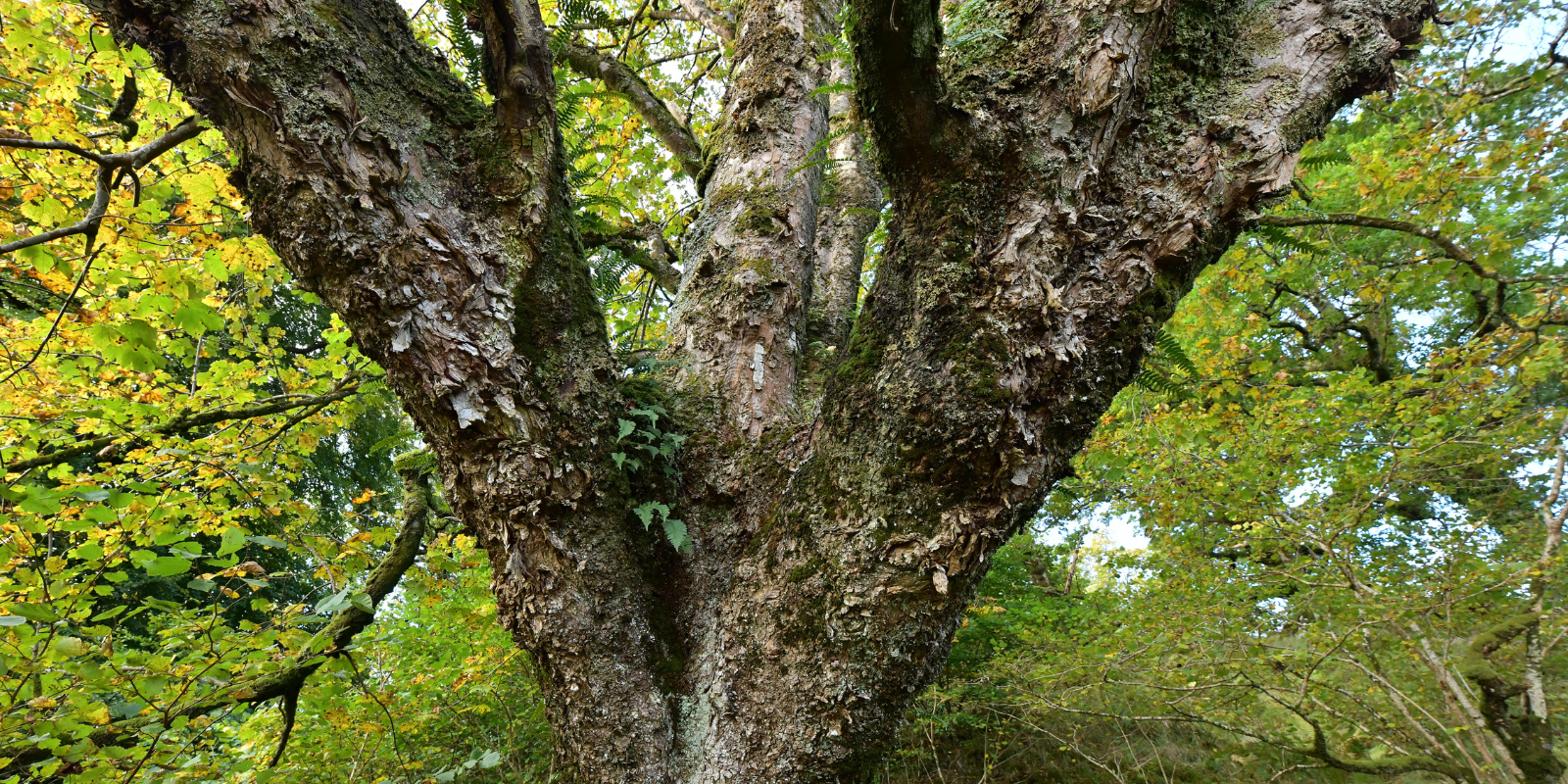While we’re working hard to create new forests for the future, we also understand the importance of protecting and restoring precious ancient woodlands on our land. Here we take a closer look at why these amazing ecosystems need our care.
What is Scotland’s ancient woodland and why do we need to restore it?
Ancient woodland in Scotland is defined as an area of land where there has been continuous tree cover since at least 1750. These ancient woodlands have thrived for centuries, forming intricate and irreplaceable ecosystems which support a diverse range of plants and animals. Ancient woodlands are amongst the world’s rarest and most endangered habitats.
Threats to ancient woodland
Britain has lost almost half of its ancient woodland since the 1930s, either through clearance for agriculture or conversion to conifer plantations. Sadly, the remaining pockets of this precious woodland are still under threat, due to legal loopholes in planning regulations and legislation which mean that ancient woodland can still be legally destroyed.
Lack of sufficient legal protection is just one of the factors leaving ancient woodlands vulnerable and in need of restoration. A rising number of tree diseases and insect pests can threaten the health of the woodland. The woodlands can also be subject to overgrazing – the presence of high numbers of deer prevents new saplings from establishing, and can impact woodland ground flora. Invasive non-native species can be catastrophic to ancient woodlands; rhododendron for example is toxic to wildlife and smothers other plants.
Restoring and protecting ancient woodland on our sites
We are lucky enough to manage a number of sites containing areas of ancient woodland. At our Glenaros site, our ecologist, foresters and arboriculturists are protecting and restoring a special area of ancient Atlantic Hazelwood, also known as a Celtic rainforest. We are also safeguarding ancient woodland on our Dumyat and Brisbane Mains sites.

h
Protecting ancient woodland at Glenaros
We actively manage over 46ha of ancient Atlantic Hazelwood on our beautiful site at Glenaros on the Isle of Mull. From early surveys and monitoring of these woodlands, we know that they are suffering from overgrazing, but are still supporting rare lichen and fungi communities. We are also aware that invasive rhododendrons is on the edge of these woodlands and will threaten their future if not subject to a robust control programme. It’s vital that we take action to preserve this remarkable habitat.

Our restoration process
We are currently at the second stage of our ancient woodland restoration process. Steps we have taken so far include managing pigs, sheep and deer on the site to prevent overgrazing of seedlings, and the removal of conifer plantations. This winter we will be controlling rhododendron growing around the edges of the site to prevent it penetrating further into the woodland.
Support our work and protect Scotland’s rainforest and ancient woodlands today!
